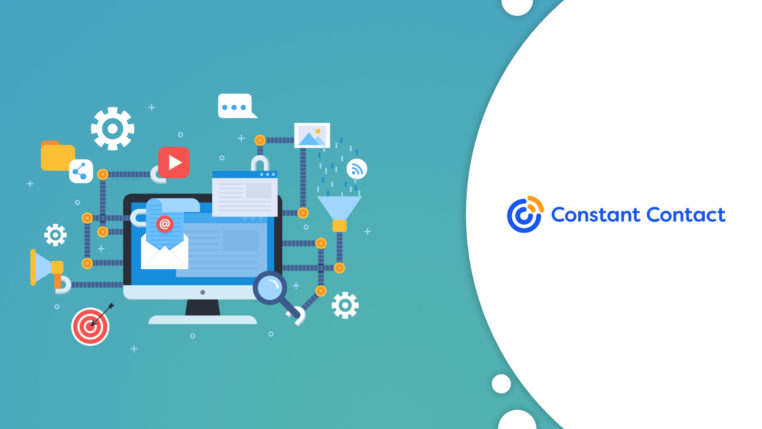How to Distinguish Your Email Marketing Campaign From Scammers To Increase Engagement

Table of Contents
Digital marketing is fast becoming a crucial form of marketing for businesses. This is simply because it works. Email marketing has a high return on investment (ROI) and is just downright effective.
Unfortunately, the rise in email campaigns has given birth to many scammers too. They love to send out phishing emails, disguising them as genuine. Most people are usually afraid to open such messages.
In the end, this can hurt the email marketing campaigns of genuine marketers.
So, you must distinguish your marketing emails in a way that makes them stand out from scammer emails.
How Do Fraudsters Scam People With Emails (Phishing)?
Phishing is a form of social engineering attack carried out by fraudsters. Their aim is usually to steal personal information. Such information may include log-in credentials, bank account numbers, and credit card numbers. The attacker will masquerade as a trusted entity and dupe the victim into opening the email.
On opening the email, the fraudsters will trick the victim into clicking a malicious link. This will install malware on the victim's device and give the criminal complete access to it. They then use the sensitive information to exploit the victim.
The fraudster will use this information to carry out scams like identity theft. They can also sell the data on the dark web as well or use it for blackmail. The ultimate goal of a phishing attack revolves around scammers tricking email owners.
There are millions of phishing emails sent out every day. But a good number of people are taking steps to protect themselves from these frauds.
How Is This a Huge Problem and Why Does This Concern Email Marketers?
For most organizations, email is a key driver in generating more leads. It is also the key to converting these leads and securing them for the long term. Email marketing is instrumental in generating the revenue of an organization. Unfortunately, the most valuable marketing tool is also the least secure one. There are millions of phishing emails sent out each day all over the world.
If you are an email marketer, then phishing is a big problem for you. Here is more on how phishing can impact your email marketing campaign:
1. It can reduce the effectiveness of your legitimate marketing emails
Increased phishing attacks have made recipients paranoid. Phishing can reduce the open rate of legitimate marketing emails. People tend to ignore emails they do not recognize.
2. It erodes email marketing revenue
Phishing has a direct effect on your email marketing-generated revenue. Most email users will set spam filters so they don’t receive phishing emails. Unauthenticated emails are usually marked as spam by mailbox providers.
By not authenticating your email, you may face reduced deliverability or outright rejection. In the long run, the revenue you earn from email marketing will drastically reduce.
3. It can destroy brand trust
Brand trust is an invaluable resource for any business. Phishing can erode trust. It is hard to regain this trust once you lose it.
Methods Scammers Use in Their Phishing Scams
Scammers can use a variety of methods to attack unwary victims. Here is how it works: A targeted email user will receive an email with either a URL link or an attachment. The email will look genuine, claiming to be from a trusted sender.
In the case of URL phishing attacks, the scammer will masquerade as a legitimate entity. The scammer will send an email message asking the recipient to click on a malicious link. Clicking this link will redirect the victim to a malicious link. At this point, they will have to provide personal information.
Scammers can also send emails with malicious attachments. The attachment will install malware on the user’s device. The scammer can then take control of the system and steal sensitive information.
Fraudsters can also pose as genuine business entities. They will often forge brand logos to make their emails seem legitimate.
How Can Email Marketers Distinguish Their Email Marketing Campaigns From Scammers?
The good news is that there are ways you can distinguish your emails from scammers.
1. Authenticate your emails
It’s important to authenticate your emails. This will convince your email recipients that you are a genuine sender. Authentication validates your identity and makes your emails distinguishable from scammers.
There are 3 major ways of authenticating your email. These are:
- Sender Policy Framework (SPF)
- DomainKeys Identified Mail (DKIM)
- Domain-based Message Authentication, Reporting, and Conformance (DMARC)
As an email marketer, the most useful authentication method would be DKIM. It allows email recipients to verify the authenticity of an email sender. It adds a digital signature to email headers. The signature is validated against a public cryptographic key in the business Domain Name System records.
2. Request personal information in the right way
At times you may have to ask for personal information from your email recipients. Since asking for personal information is the hallmark of email scams, you need to do it in the right manner. This will ensure that the recipients of your marketing emails do not see you as a scammer. You should avoid using common phishing phrases and trigger words.
Here are a few tips to go about it the right way:
- Choose your words well. Anything like “urgent action required” and your recipients become reluctant. Such language will raise red flags in the minds of your recipients.
- Personalize your messages. Scammers don't personalize their emails with the recipient's name or customer IDs. This is because they usually lack this information. So to stand out from scammers, personalize your emails. In fact, the more personalization the better.
3. Use a clear “from” name
Authentication aside, your “from” name should identify who you are. This is one thing that scammers never do. By making your “from” name clear, you gain the trust of the recipients of your email. This works best where you have an existing relationship with your subscribers or where your brand name is well-known.
4. Provide useful content
Most scammers will only offer promotional messages in their emails. So, to distinguish yourself from scammers, provide information that is useful to recipients. Always aim to add value and leave readers satisfied with the quality and depth of your content. It’s a cardinal marketing rule that you offer value first, before going in for the sale.
5. Use correct grammar
One thing that is common with scam emails is a lot of misspellings and grammatical errors. Your content should instill trust in your audience through error-free writing. You can engage professional proofreaders and premium grammar tools to achieve this.
Tips for a Successful Email Marketing Campaign
1. Build your email list
A successful email marketing campaign starts with a quality email list. This list should be full of qualified leads. You can achieve this by including a signup feature on your website. For example, you can have a popup on your website asking for the email addresses of visitors. With this information, you can turn them into subscribers and customers.
2. Use catchy subject lines
The subject line plays a crucial role in getting email recipients to open your emails. So you need to design a subject line that is catchy and can capture the attention of the recipient. Also, short, descriptive subject lines perform better than cheesy ones.
3. Customize your emails for mobile
A lot of people open emails on their phones and tablets. You need to keep this in mind for your email marketing campaign to succeed. You can customize your emails for mobile phones in the following ways:
- Optimize the subject line length. 41-50 characters will do.
- Make your email straight to the point.
- Use a large font size.
- Display small images.
- Provide a clear call to action.
4. Keep your emails out of spam folders
Emails flagged as spam will never see the light of day. So to ensure you don't get flagged, you can use spam checkers, which spot spammy texts before they are sent out. Prevention is better than damage control.
5. Use Segmentation
When you group your audience according to common attributes you’re able to increase efficiency. This means you can design customer journeys that are unique to a group. You can also create personalized content to influence action from your readers. Avoid sending the same email to your entire list. This would increase the chances of your content being irrelevant. Scammers often send irrelevant content. Don’t be like them.
6. Optimize the send time
The majority of people open their emails between 8 pm and midnight. So to increase the chances of people reading your emails, you should send them between 8 pm and midnight.
7. Provide useful content
No one wants to read a bland email that has no useful information. You should thus ensure that you provide content that is useful to your email recipients. This is easier to achieve when you know exactly what your audience’s pain points and needs are.
To be successful at email marketing, your emails have to appear authentic. This way, your recipients are more likely to open and view your messages. At the end of the day, a high email open rate is the gateway to more sales and conversions. Every business owner wants that.
Share this article



